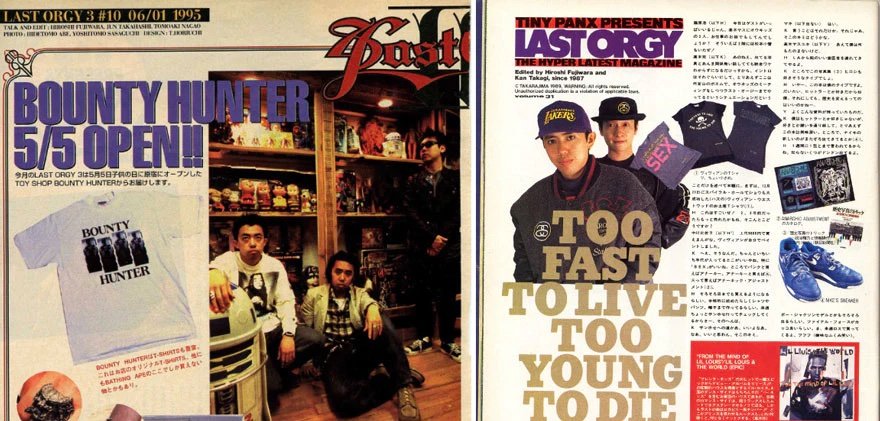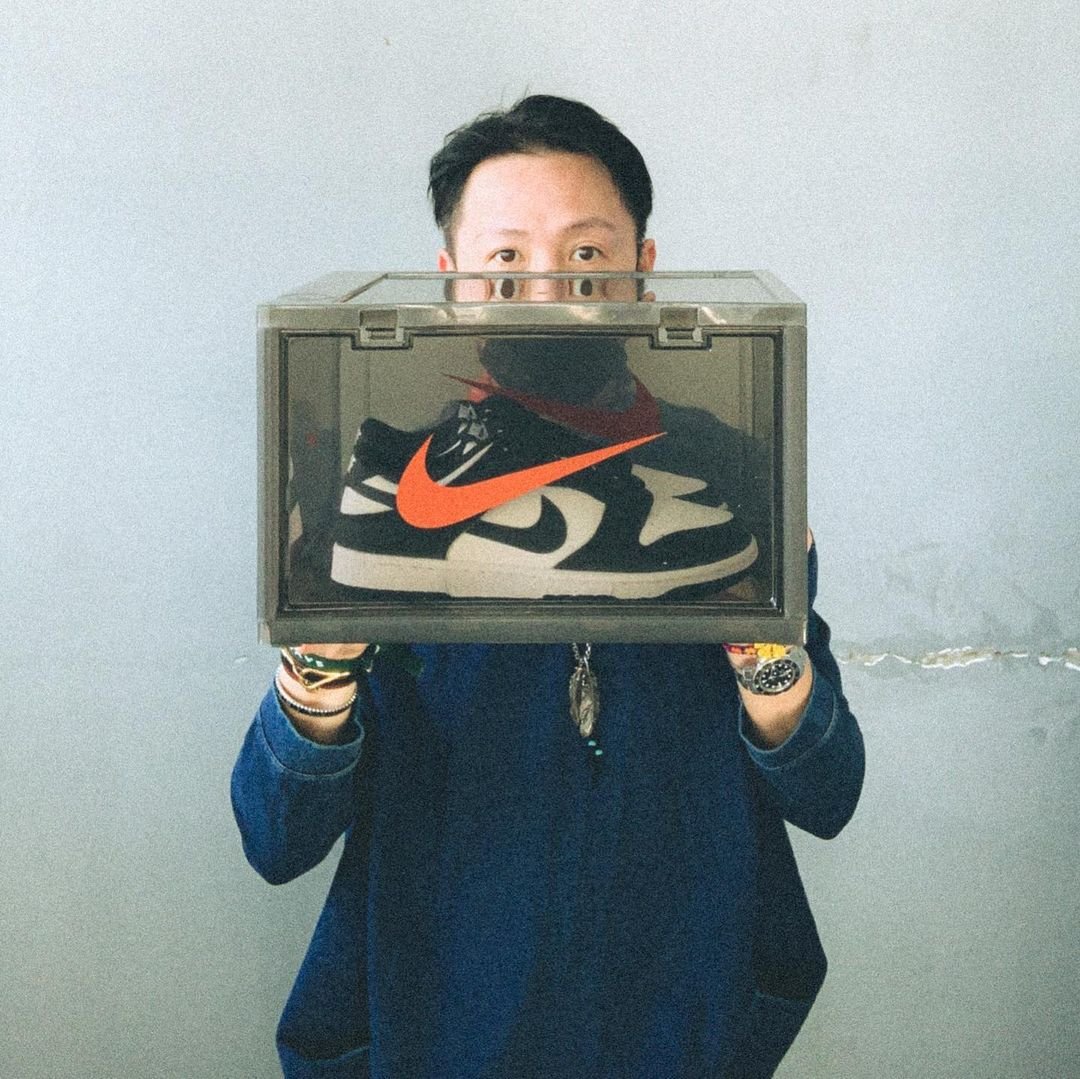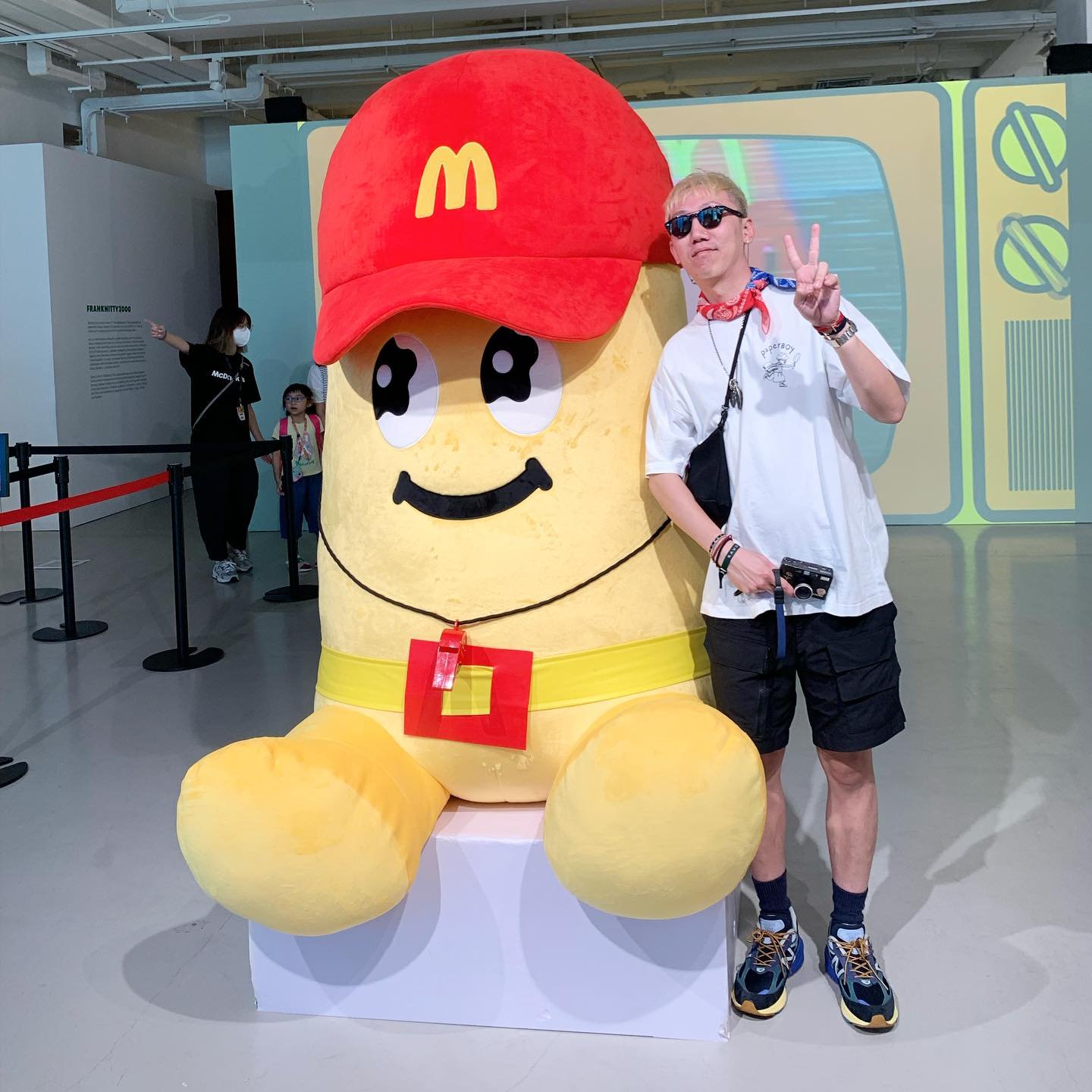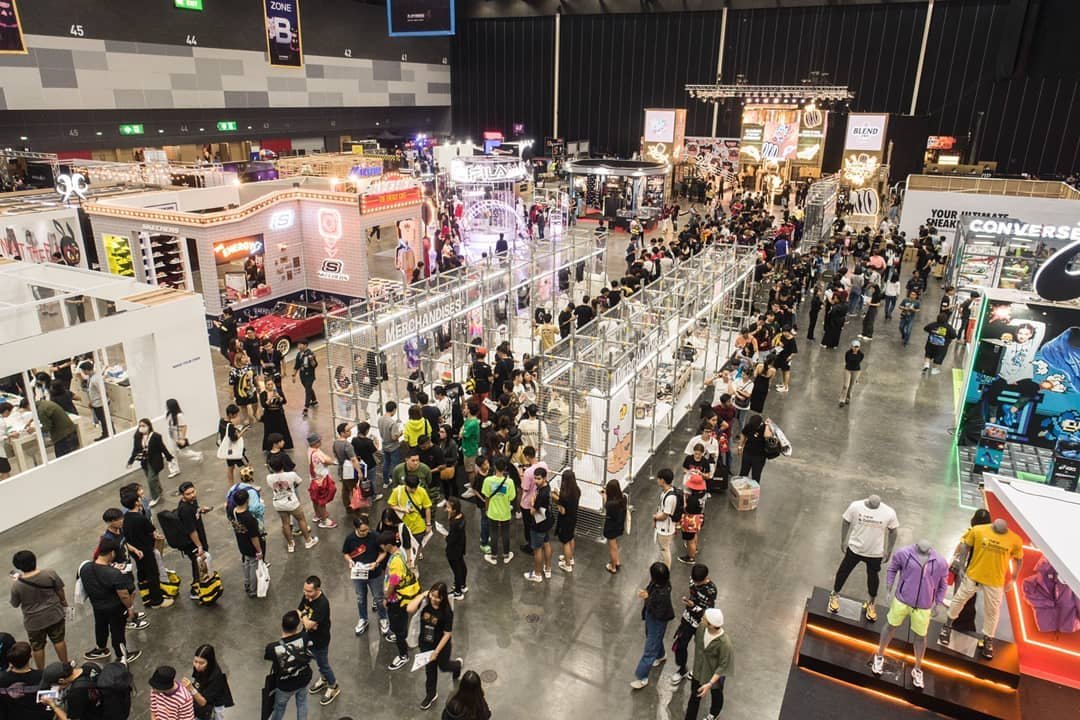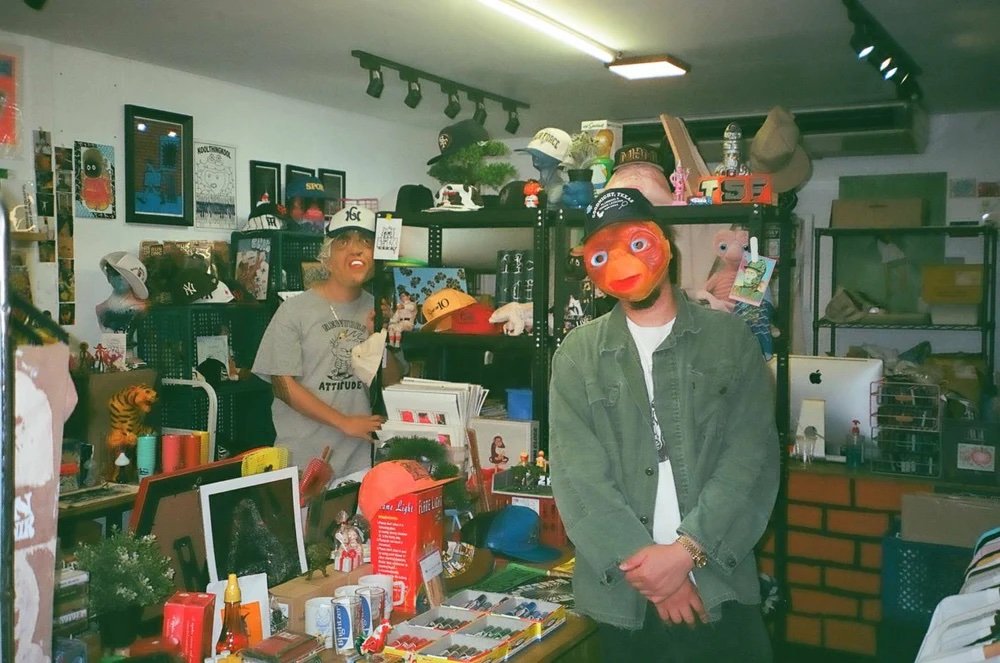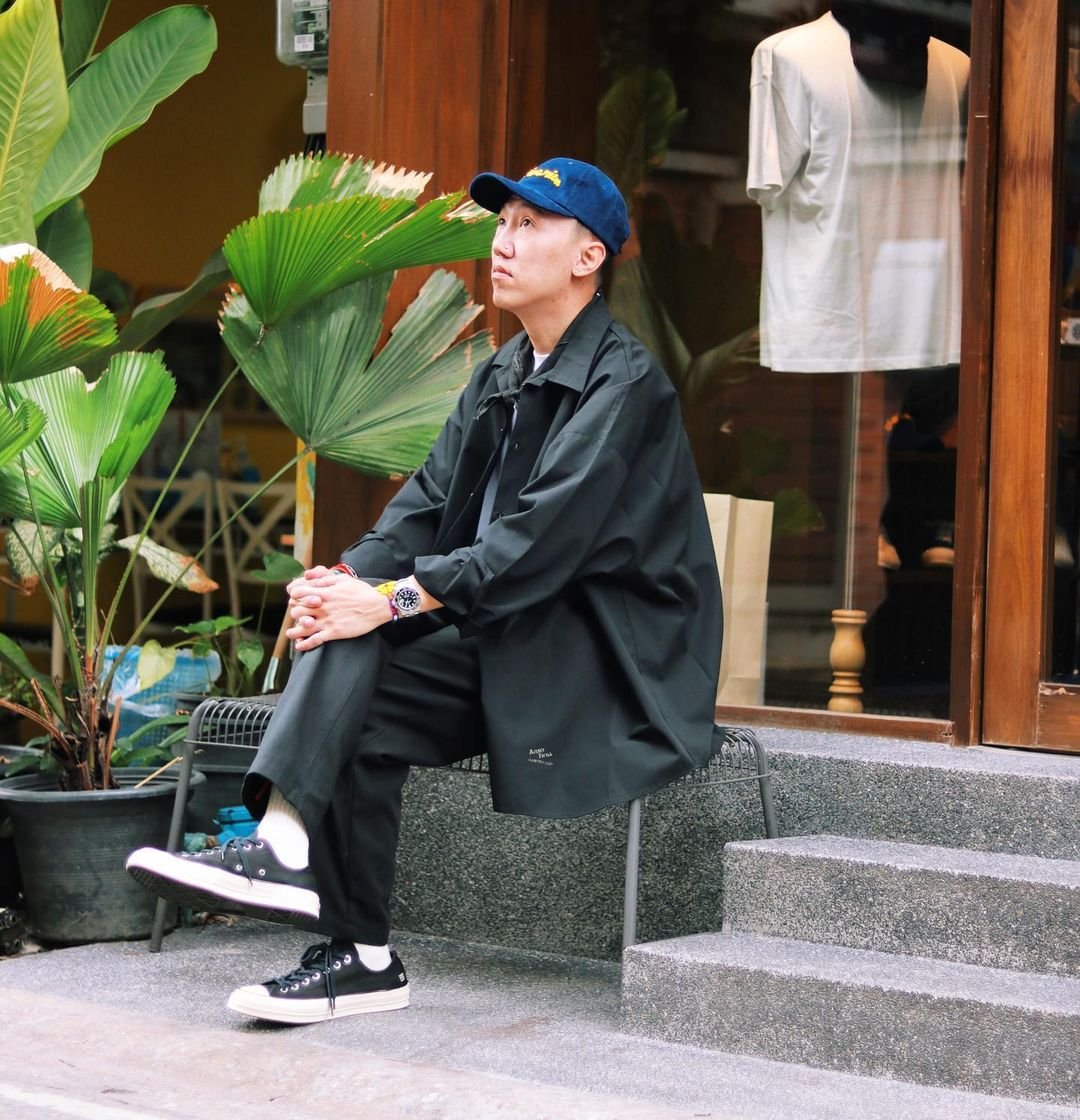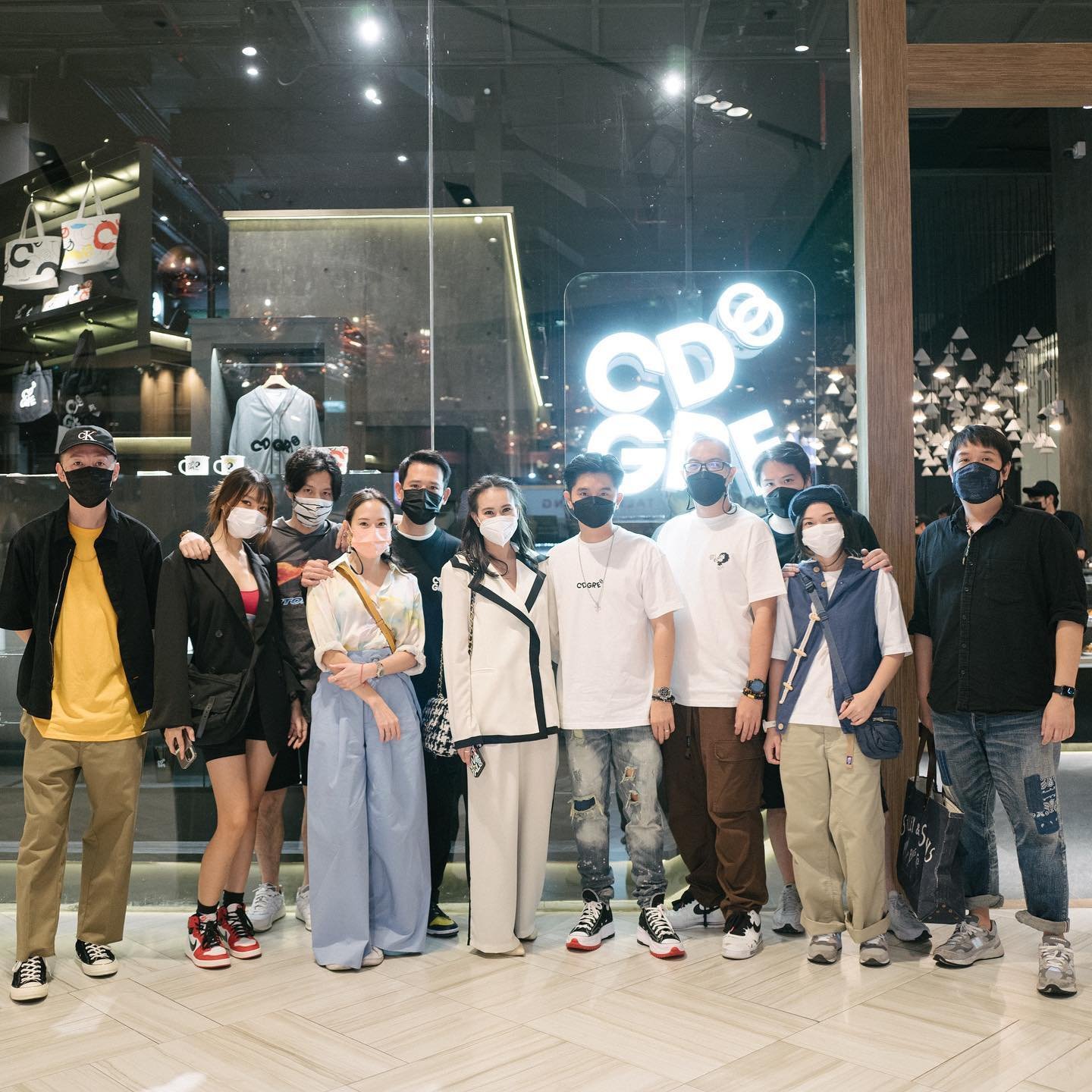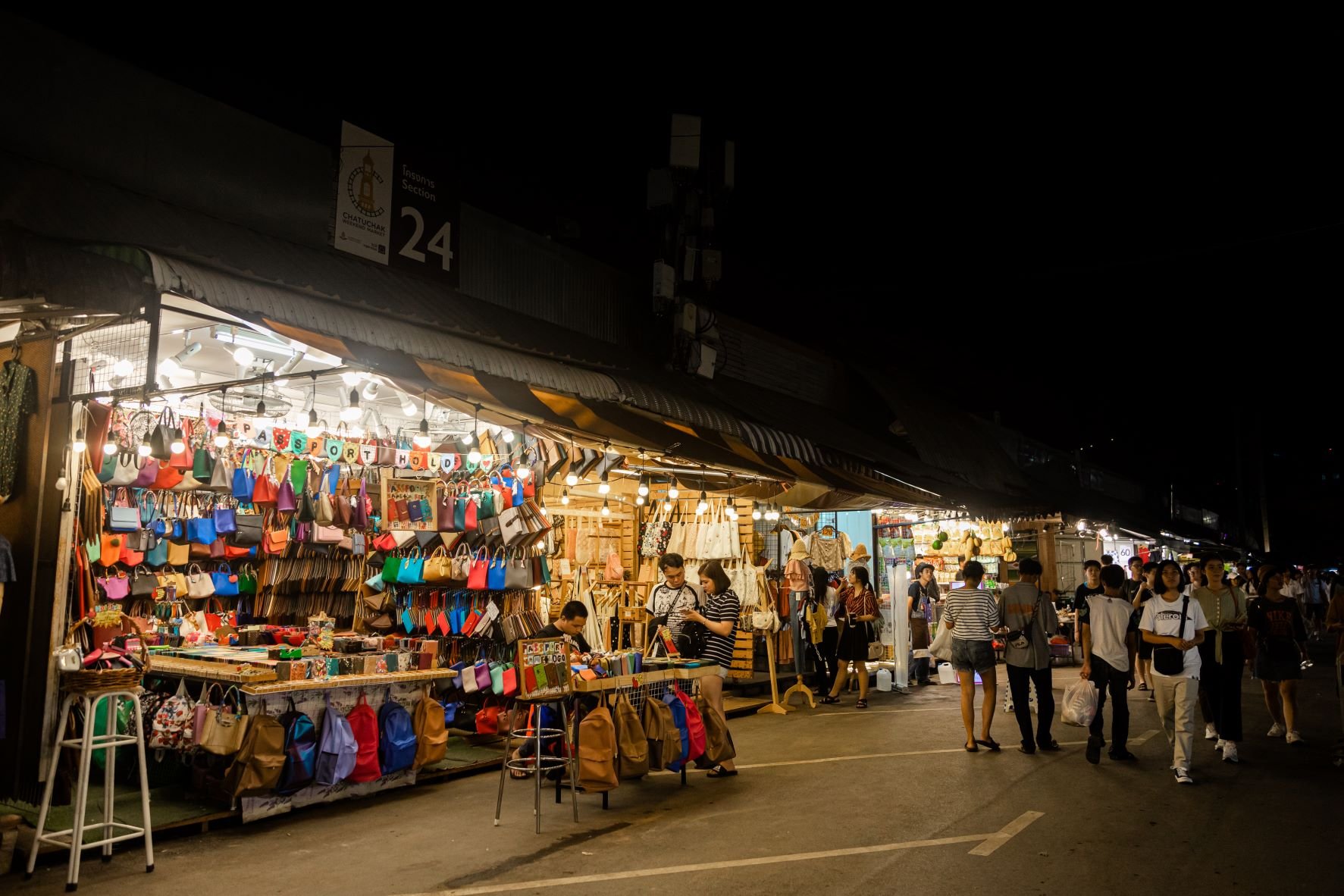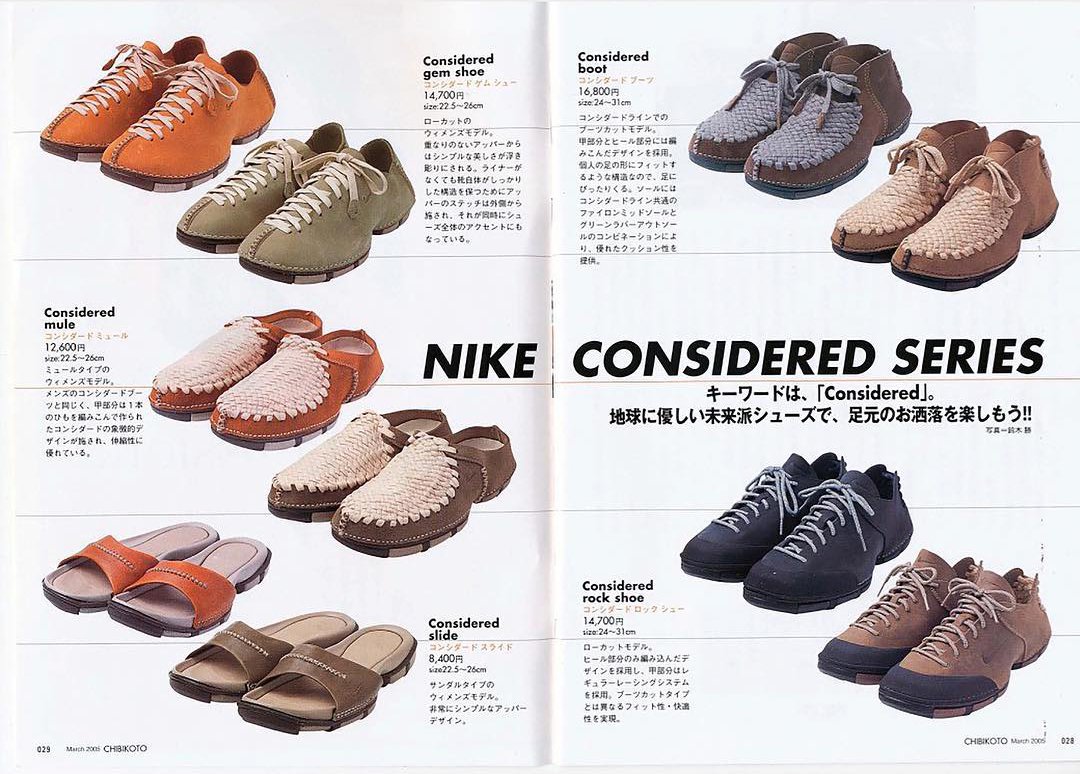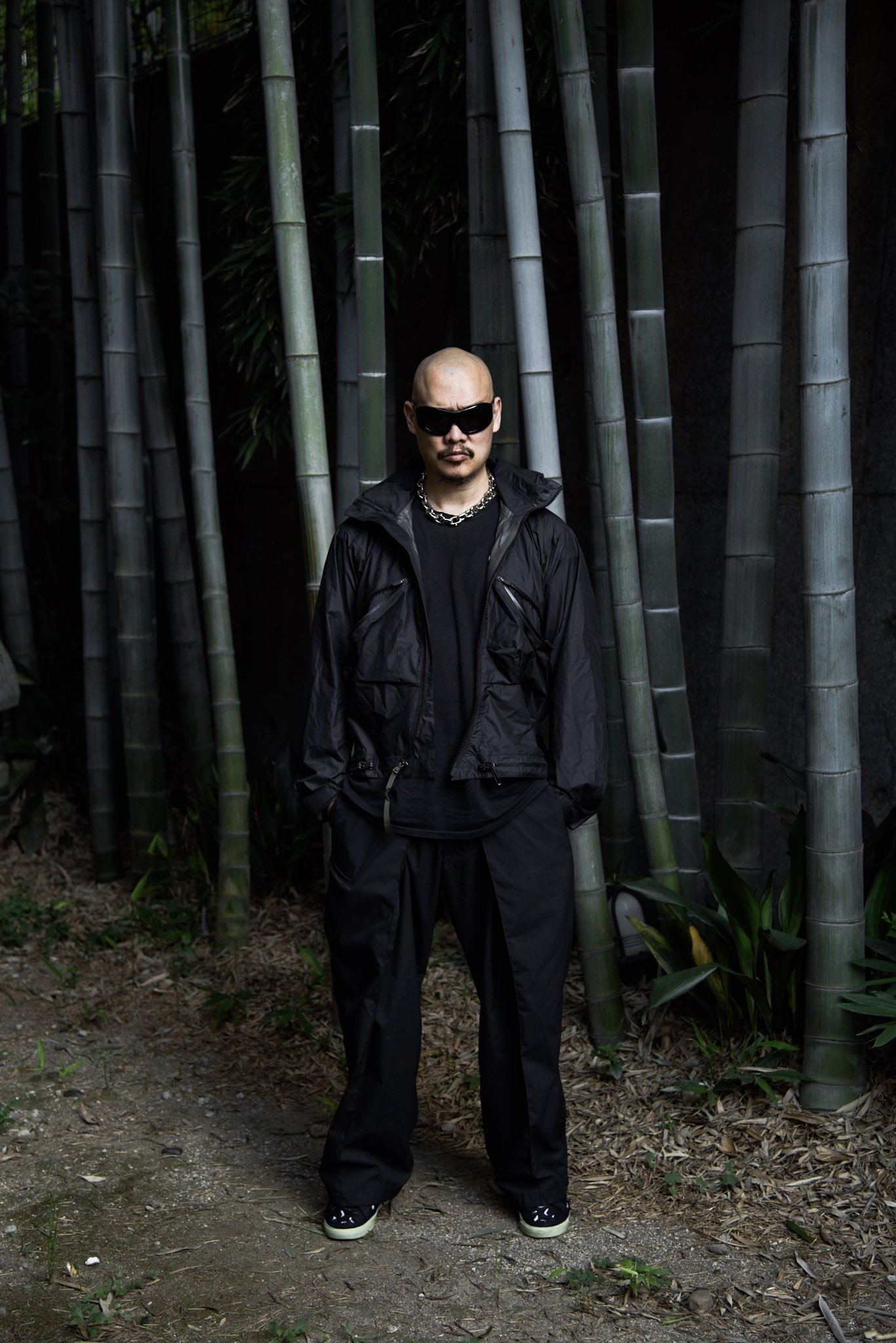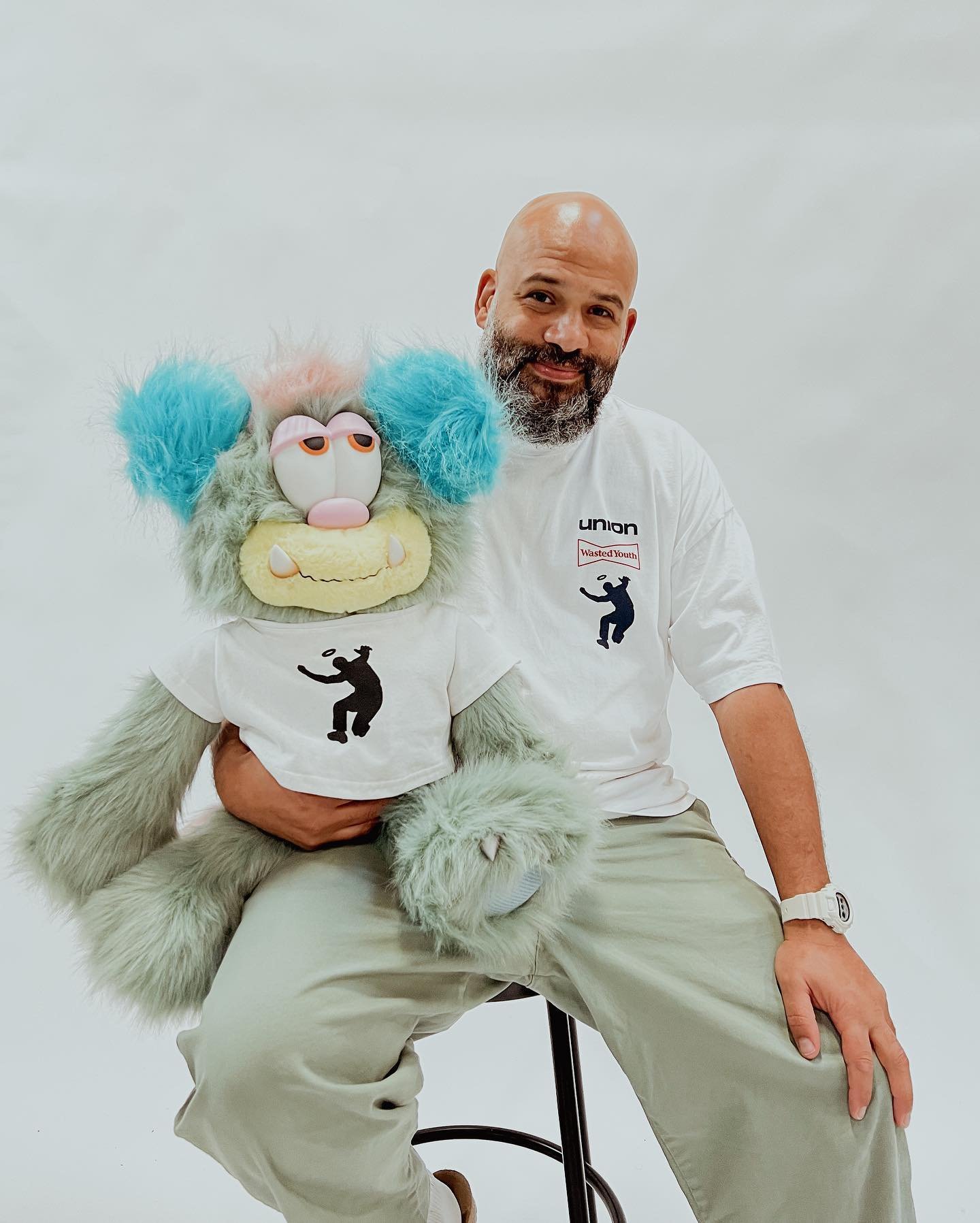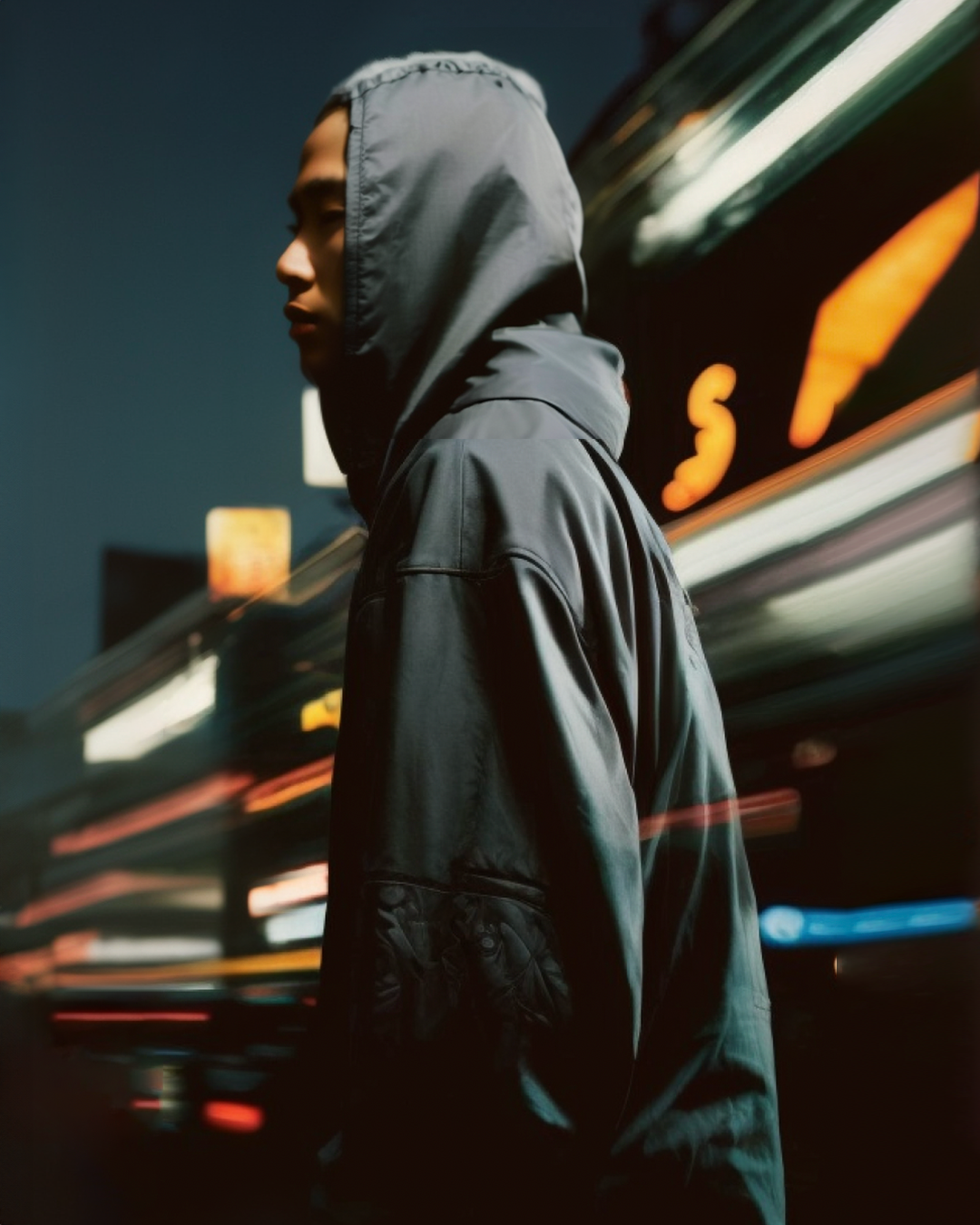The Heart and Sole of Bangkok Street Culture – How Jeed Created a Sneaker Legacy

Next to the faces that everyone knows in the industry, there’s always been people behind the curtain pulling strings. One of them is Jeed S. Muangsirikwan from Bangkok, Thailand. Despite being fairly under the radar in the wider realms of fashion, this sneaker enthusiast, consultant, event organizer, and all-round culture curator is nothing short of a legend; at the helm of movements, and truly causing proactive action in the streets of Bangkok and beyond, his legacy was born from passion and he continues to stride forward with this same spring in his step.
Living in Thailand, Jeed sits in a market that yet has to be put on the international map of the fashion and streetwear scene. Slightly overlooked by the big players, Bangkok has so much to explore, and we are all here for it.
Jeed is one of the driving forces that’s projecting new and tasteful style to the busy streets of Bangkok. As one of the members of the most OG sneaker communities to exist, Crooked Tongues, Jeed’s been here since the start and hasn’t let off the gas ever since. This knowledge from the early days is now being distilled into everything he does, whether that’s organizing his own events with his culture festival, Platform66, or consulting for the likes of CDG.
Originally inspired by Western cultures such as extreme sports, basketball, and hip-hop culture, this has shaped him to be who he is today. This passion stemming from his upbringing has helped drive Jeed forward, and now in his adult years aims to share this passion by energising the streetwear scene in Bangkok.
Despite the early inspirations from more Westernized cultures, what really sparked Jeed’s interest in street fashion is when he found Japanese Fashion Magazines like Men's Non-No, Boon, ETC in a local imported bookstore in Bangkok. Surprised by how Japanese People mixed and matched their outfits with sneakers, it was also here as well as Japanese brands such as Good Enough, BAPE, Undercover, and Visvim that really launched him into the euphoria of street culture.
As one of the leading heads over the Sea in Thailand, Jeed is also co-founder Platfrom66, the biggest Thailand street culture festival bringing the scene under one roof. The event, which unfortunately has been postponed since 2019 due to the pandemic, brings together music, fashion, and food in a connection of ages and hobbies and creates a safe space for other like-minded aficionados.
With us being huge lovers of Bangkok, our Editor-in-Chief met up with Jeed on his travels and instantly knew it was someone we had to put the limelight on. Being an integral part of both the Thai scene as well as worldwide, what has come from passion and dedication to the scene has now transformed into a legacy and career that any fashion enthusiast needs to know about.
To understand the importance of this individual, no research or deep archival dive would do it justice. Because of this, we managed to sit down with Jeed to talk about his life, his inspiration, and his early beginnings and also get an unprecedented insight into the Bangkok streetwear scene.
First of all, could you please start by introducing yourself to the sabukaru network?
Hello Sabukaru, my name is Jeed from Bangkok, Thailand. Currently, I work as a creative consultant and serve as a co-founder of PLATFORM66, the biggest street culture event in Thailand. Additionally, I am an avid sneaker collector.
You are a Veteran in the street culture scene. Could you please tell us about your journey so far in fashion?
I believe my journey is almost identical to that of everyone in this culture. Growing up and being influenced by basketball, extreme sports, and hip-hop music since the 80s shaped who I am today. However, my turning point came around '97-'98 when I purchased Japanese magazines from an import bookstore in Bangkok and discovered CO.JP and some limited editions. This ignited my serious interest in sneakers. Unfortunately, at that time, I had no other sources to learn from until '00, when the era of forums and blogs emerged (such as Nike Talk, Crooked Tongues, Superfuture, Slamxhype, Blogspot, Wordpress, etc.), opening up a whole new world for me and fueling my obsession with sneakers and streetwear brands like BAPE, Visvim, and Undercover, among others.
During that period, I had no friends with whom I could share my obsession until around '05 when sneakers and street fashion started gaining recognition here. We formed local communities, such as forums, which became a place where people who loved sneakers and fashion could share their passions. I also started my own personal Wordpress blog, where I shared anything I was into at the time. In 2006, my friends and I had the opportunity to curate an event for Nike Thailand, specifically for the 25th anniversary of the Air Force 1. This experience led me to become an influencer for Nike Thailand and opened up numerous opportunities to collaborate on various events with the brand. It also paved the way for me to work with other fashion brands up until today.
Streetwear and street culture is a worldwide phenomenon, with it being at different stages in the different countries across the world. At what stage is the Thai scene at right now?
I would say that the Thai scene is catching up at almost the same pace as the global scene in terms of street fashion. The internet and social media have made the world smaller, allowing us to access anything from anywhere. You can witness the latest fashion trends on the streets here, combined with unique local elements based on individual preferences. In terms of products, Thailand has significantly improved, as we now have access to almost everything that the rest of the world offers.
Who are the current big players and individuals in the scene right now?
There are several players who are making a significant impact in the scene, such as CARNIVAL, 24Kilates Bangkok, and ATMOS Bangkok, all of whom consistently offer excellent products. Additionally, there are other stores that carry good brands, such as ONION, and Club Luminaries. Another contributing factor is the presence of online resellers who curate desirable items from abroad, filling the gap in our local market. When it comes to individuals, I think @sneakeronsight is doing a good job with their own content as a local media. However, I am not familiar with other individuals as I do not closely follow them.
What is currently hype in street culture in Thailand? Are there any particular brands that people are really buying into?
Not to be biased, but I genuinely believe that my friend's brand, CARNIVAL, is doing an exceptional job of generating hype within the local scene here. Every time they release a new collection of apparel, people line up in front of their stores. While it's true that some of the people are resellers, it still contributes to the thriving atmosphere of the scene.
What about people's buying behaviors? Is there a big retailer scene over there or is it mostly online?
They are closely following the trends and staying up-to-date. For instance, in the sneaker scene here, the Adidas Samba is immensely popular, while the Nike Dunk Low Panda consistently sells out whenever they restock. People have also started embracing other brands like Salomon, Asics, and even Hoka. New Balance, although relatively stable, remains a favorite choice among the masses.
Being a leading figure in Thailand's street culture scene, how is the sneaker and fashion scene unique there to the rest of the world? How do you guys do it differently or what’s specific to Thailand?
Because of the internet, everything has become easily accessible, and I don't see much difference compared to the global scene. Whatever trends they follow, we also follow here. However, we also incorporate our local brands into the mix. Additionally, there are unique styles that are based on individual interests, ranging from music and sports to even racing!
Where did it all start for Thailand? Who or what was behind the initial street culture and streetwear scene?
I would say around 2005 was a significant year when we had local community forums known as Sneakers Society, where people came together to share their knowledge and information. Following that, there was Soul4Street, a platform that I and some individuals from the previous forum helped establish. It has since become one of the largest local media outlets for street culture and street fashion in Thailand, maintaining its influence to this day.
However, if we're discussing who truly brought recognition to the scene, I have to credit PREDUCE Skateshop. During that time, Nike SB gained immense popularity, and PREDUCE was the first and only account in Thailand to carry Nike SB. If my memory serves me correctly, the first-ever sneaker lineup in Thailand took place at PREDUCE Shop when they released the Nike Dunk Low Pro SB SBTG in 2006. I vividly remember going there with my friends the day before to purchase the shoes. It was at that moment when I met other like-minded individuals who shared the same passion as mine, and some of them have remained my sneaker friends till this day. If I had to acknowledge someone, PREDUCE Shop deserves the credit for playing a crucial role in the local scene.
sabukaru is super interested in subcultures around the world. Could you share a few of the niche communities or subcultures within the Thai scene?
There are several young generations in the local creative scene who deserve attention. For instance, BLAQ LYTE is making a significant impact in the party scene, while KANGKAO is a collective of Thai artists pushing the boundaries of art and music. I WANNA BANGKOK is thriving in the fashion scene and LGBTQ+ community. Additionally, there are numerous young talents hidden within the scene, eagerly waiting for the right moment to shine.
Are there any other upcoming brands and creatives to look at stemming from Thailand?
There are many local brands that I really like and enjoy wearing. One of them is LA ROCCA , which is an upcycle brand that recycles old Polo Ralph Lauren shirts and creates new patterns. Another brand I like is GET RICH EASY, an emerging streetwear brand that continues to improve. KNOWWHERE Studio is also gaining recognition in the scene. Another brand that I really like is Rompboy, which has a strong and dedicated fan base.
Additionally, I have a fondness for Smileclub Custom due to the owner's background as a hairstylist with a passion for fashion. He consistently customizes his own clothes, drawing inspiration from Thai souvenir merchandise while adding his unique twist to them.
Where do you think the Thai street scene may be heading next?
Currently, I feel that we are already one of the sought-after destinations in Southeast Asia, and I hope it won't be long before we gain recognition throughout Asia. While there are brands and artists from our country who have achieved great success on the world stage, they may not have received the same recognition within the street scene. I hope that some of them can reach that level of success here soon.
What do sneakers or hyped releases look like in Bangkok? Are people lining up at stores? Are there raffles?
They're doing both right now. Since the pandemic, some retailers have started doing raffles and have continued doing so for any hype products. They also continue using the traditional way at the store as well.
What are some Thai brands that are really doing it right, making the right moves, and connecting with the right people?
CARNIVAL is a good example of a brand that is performing exceptionally well in the scene. They act swiftly and consistently make the right moves. Additionally, they have a strong base of loyal customers who consistently support them whenever they launch something new. People eagerly line up for their products. Another brand that I believe is doing great, although not in the Street Scene, is I WANNA BANGKOK, which has impressed me with their actions.
Who are the influential people in the Bangkok scene? Who are people looking up to?
The kids here still look up to global artists like Travis Scott, Pharrell, A$AP Rocky, and Tyler, the Creator. Music continues to play a significant role, and we also draw a lot of influence from Korean culture, especially Lisa from BLACKPINK, as she is Thai. Everything she touches or wears almost instantly sells out within minutes here. However, since Thailand is a tropical country, some styles might not work here, but they adapt them to fit their own style.
Lisa from BLACKPINK
We recently saw that Atmos reached out to Bangkok. How does this have an impact on the scene?
Not just Atmos Bangkok, but also 24Kilates from Barcelona, JD Sport, and soon-to-be Foot Locker, along with local brands like Carnival, Seek, and Onion, excluding sport brands' own stores. I believe this benefits us here, as we now have more retailers offering a wide range of quality products. Currently, Thailand has almost all the hype shoes compared to the rest of the world, thanks to these retailers. Personally, I find it interesting to witness the competition because, in the end, it ultimately benefits us as customers.
What is the mainstream appeal towards sneakers like? Is it still a niche topic or does it have a big crowd?
It's still a niche topic, if you ask me, because there are a lot of interests that are hard to identify. I think Korean culture plays a really big role right now, from Korean dramas to Korean music, and even their own Korean music festivals in Thailand.
What are some local releases and collaborations from the Thai street scenes that you think should have a global audience and want people to know about?
Not to be biased, but my friend's brand, CARNIVAL, deserves recognition as they have collaborated with many major brands like Adidas Consortium and Asics. They have also obtained numerous licensing collaborations, including Disney, One Piece and ETC. It's not just limited to apparel collaborations; they have also partnered with lifestyle brands, such as outdoor products, and even food brands like KFC. They are a local brand that I believe the world should recognize.
We know that you also have worldwide knowledge having worked for brands all over the world. What kind of inspiration from the rest of the world has helped shape you into the creative you are today?
I believe the key for me is to stay updated as much as possible. It's like riding a wave, understanding the current trends in the industry, and absorbing everything while selecting what's best. Not everything that the world considers good will necessarily work here. Some things may be too early for this context, so it's important to adjust and forecast what will work well.
I consider myself fortunate that my experience greatly helps me when working with brands. Having been a customer before, I understand the market's desires and the path to reach our direct targets. Moreover, I always maintain an open mindset and leave my ego aside, eager to learn anything that benefits me. Some ideas may not work immediately, but they might hold potential for the future.
The same principle applies when I assist friends who seek my help. I am certain they would do the same for me when I need their support. I am grateful to have met numerous amazing friends from all around the world who have been instrumental in aiding me. Through introductions by my existing friends, I continually expand my network, including individuals working in this industry. It's like a spiderweb where everything is interconnected. These connections not only form friendships but also enable the sharing of knowledge.
Now let’s quickly dive into your project, PLATFORM 66. Could you tell us about this?
PLATFORM66 is the biggest Street Culture Festival in Thailand. The idea was in my mind six years ago when I wanted to create an event that not only focused on sneakers but also involved major brands. However, at that time, it was challenging for me and my partners to make it happen due to difficulties in connecting with the brands. Additionally, there had been no such event of this kind in Thailand before. Consequently, I had to put the project on hold.
Since then, Pint (Co-Founder of CARNIVAL Store) and I have traveled together to many countries, attending various Street Culture Events worldwide, such as Complex Con (USA), Atmos Con (Japan), Innersect and Yo-Hood (Shanghai), Sneaker Lah (Malaysia), and Culture Cartel (Singapore). Pint suggested that Thailand should have an event like this, and I mentioned that I still had the presentation. After he saw the deck, he agreed to make it happen. Thus, in 2019, we organized the event, which became the largest in Southeast Asia in terms of scale and participation, with both global and local brands joining us. It was a great success for our first event.
Unfortunately, the pandemic struck, and we had to postpone the event for two years. This year, we decided to postpone it once again due to factors beyond our control, as we want to ensure that we can reach the same level we achieved before. However, we plan to collaborate with a local artist to host a small launch event to let people know that we are still committed to the festival. And hopefully, we will make it happen once again in 2024.
We also know you do a lot of events in Bangkok and Thailand - can you tell us a little bit about how events look like in this scene in Thailand?
For me, it depends on each brand that I work with. Most of them are always looking for a good energy vibe at events, so I need to figure out what's best to bring people and keep them happy. For example, the Hennessy V.S. Event that I have organized for many years simply involved free unlimited drinks and good music. When it comes to fashion brands, it's all about expressing the brand's identity and attracting creative individuals from the industry who come out to support. The pattern is similar to the rest of the world, but we mostly collaborate with local talents.
When thinking of Thailand, many people instantly think of Bangkok – but are there any other cities or subcultures that you want the rest of the world to know about that may not be as documented?
Chiang Mai is the place that can answer this question. I believe Chiang Mai has its own unique vibe, combining traditional roots with a modern twist. The local scene is particularly strong, especially in the art scene. In the fashion scene, there are some local talents that I truly admire, such as DEN SOUVENIR, which is performing exceptionally well and gaining popularity in South Korea. Another brand is Rubber Killer, a recycling brand that specializes in using reclaimed inner tubes to create innovative upcycled products. I'm certain there are many talented individuals waiting for their time to be recognized.
DEN SOUVENIR
We have read how Japanese fashion has heavily influenced you. When was the first moment you came into contact with the Japanese scene?
Around '96-'97, I stumbled upon Japanese magazines in a local imported bookstore in Bangkok. If my memory serves me right, it was SMART Magazine. My mind was blown when I saw limited edition sneakers like the CO.JP releases, as well as exclusive colorways of Dunks and Air Force 1s that I had never seen before. Additionally, I discovered Japanese brands such as BAPE, Good Enough, Hysteric Glamour, Undercover, and more. During that time, I was heavily influenced by hip-hop music, which I discovered through magazines like The Source or XXL. I also drew inspiration from skate culture through Transworld Skateboarding and Thrasher Magazine as well.
The thing is, some fashion styles didn't suit me at all, but when I was young and wanted to be fashionable, I simply followed whatever trend was popular at the time. However, everything changed when I discovered Japanese Street Fashion magazines like SMART, Men's Non-No, and even Fruits magazine. The URA-HARAJUKU style completely shifted my mindset about fashion. I was captivated by how Japanese people mixed and matched their outfits, drawing inspiration from Western cultures but creating their own unique style. It looked incredibly cool. From that point on, I immersed myself in Japanese Street Fashion because I felt that the style truly suited me as an Asian.
Japan has been known to be a hub for talent in the fashion scene. What do you think makes Japanese fashion and street culture so special?
The way they absorb and blend different cultures into their own style truly impresses me. Take VISVIM by Hiroki Nakamura, for example. While the brand is known for being inspired by Americana style, what sets them apart is their work with Japanese artisans in designing their products. This fusion of two different worlds elevates their creations to another level.
Another thing I appreciate about Japanese people is their dedication to exploring their passions. When they are interested in something, they delve deep into its roots rather than merely scratching the surface. I find this level of commitment to be incredibly admirable. Additionally, Japanese brands have excellent attention to detail and quality, which has made me love them even more.
Having consulted for the likes of C.D.G and Nike, what are some words of wisdom you can share on how to truly connect with community and culture?
First of all, I believe that passion is essential. Back then, when I was really obsessed with sneakers, I didn't know that my knowledge would come in handy until I had the opportunity to work on my first project with Nike Thailand in 2006. At that time, there were only a few people who had knowledge about sneakers, and none of them could curate the event. So, I teamed up with my ex-partners to curate my first event for Nike Thailand, which was the 25th Anniversary of Nike Air Force 1.
After that, we started curating more and more events for them. I became their first influencer and the only one from the Sneakers Culture scene. It was a time when the word 'Influencer' was still very new. Following that, I got many opportunities to work with various fashion brands, including C.D.G. Since I'm a customer of those brands, I also provided consultation based on my deep understanding of the culture. Having been a part of the culture for a long time, I know what the market wants and how to reach the target audience effectively, sometimes even better than the people working directly for the brands. For me, it's easy to discern who has knowledge and who doesn't when I work on different projects. I can offer them my expertise to help them out. Once you know what needs to be done, the rest becomes much more manageable.
You were also part of the footwear sneaker forum Crooked Tongues. This is as OG as it gets when we think of forums and mood board style pages. With the rise of these types of Instagram accounts, why do you think we are seeing such a resurgence in these types of media outlets?
I am half in agreement with that because on one hand, I feel like there are many of them now, but fewer of them are different in terms of my interests. We all know that this kind of 'Pinterest' media won't last long because they only post pictures from the past and that's it. I would prefer anything with historical articles that can provide information and cater to those who want to learn about history. Those who do that will endure because they offer us valuable content. Personally, I would love to read in-depth articles rather than just seeing photos, as I want to know the stories behind them. So, although we have a lot of such media platforms today, only the ones with good quality will survive. It's nice to see a variety of them these days, each catering to different sub-cultures and styles. Like what you guys are doing for Sabukaru!
Having been an OG since the start, what are some of your favourite pairs you've owned throughout the years?
Definitely, my O.G. Air Jordan 1 Chicago from 1985 holds a special place for me as it was the shoe that started it all. I remember when I was a child and received my first pairs from my dad. However, that shoe was long gone because I grew up and threw it away. It wasn't until I started learning about sneaker history that I began searching for a pair in my size. Eventually, I found a nearly deadstock pairs from a friend in our local community forum, and he gave me a great deal. That was in 2010, and I still keep it with me to this day.
Another pair that means a lot to me is the Tom Sachs X NikeCraft Mars Yard 2.0, which is one of my favorites. I had the opportunity to meet Mister Tom Sachs in Bangkok last year when he had a project with the Bangkok Art Biennale, and we had dinner together. During our conversation, I had the chance to discuss his works and his thoughts behind designing each shoe. I was fortunate enough to have him sign my shoe, which is not something he does often for everyone. Additionally, he even gave me a pair of his latest GPS Shoe. This experience holds significant meaning to me, and I must credit my friend who invited me to join the dinner, as she knows I am a big fan of his.
Is there any pair you don't own but are your holy grails?
To be honest, I don't have any Holy Grails anymore. I've reached a state of 'Whatever it is, it is' because I no longer want to exert excessive effort to acquire shoes, especially if they are too expensive for me or if it inconveniences my friends. It's funny that the shoe I could consider a 'Holy Grail' for me was a pair of Salomon XT-6 in Copen Blue Colorways that was released a few years ago. I had been searching for this pair for a long time but never had the opportunity to find it in my size or it was too expensive due to its rarity in that colorway. However, recently, I discovered that it was re-released, but only available online in China. Thankfully, with the help of my good friend from Hong Kong, who arranged everything for me, he managed to get a pair for me at its retail price.
Now a question for the people who want to break into the streetwear and street culture scene. What are some words of advice you share on how to best do so?
First of all, I believe that passion is crucial if you want to work in this field. Personally, I feel that no matter what you aspire to do, you can excel at it when you have a genuine passion. It makes the work enjoyable, and it doesn't feel like you're working every day.
Next, set up a goal that you want to achieve in your desired career. During the journey to reach that goal, it's important to educate yourself and continuously shape your skills. Some may suggest starting from scratch, and I can agree with that, but it will take time to progress. However, having more knowledge than someone who starts from the ground up can be advantageous.
Some individuals want to become fashion designers, while others aim to work for a brand. When you identify your goal early on, it's time to invest in self-education. I believe it's never too late to learn anything, and I don't hesitate to ask those who are younger than me because they may know better. I don't consider myself all-knowing; instead, I see myself as a half glass of water, always ready to learn and willing to seek guidance from those who have more knowledge than me.
Another important aspect is not giving up too soon. If Plan A doesn't work, then consider Plan B or Plan C, but never give up.
For our many readers who are planning to head to Bangkok in the future, what are some places to do with lifestyle/art/fashion that they have to check out?
There are so many good spots to check out if you're looking for some good vintage items. Chatuchak Weekend Market is a must-visit on the weekend (only Saturday and Sunday from 8 am to 6 pm). Also, Bangsue Junction (opens Tuesday to Sunday from 10 am to 10 pm) is a mall across the street that has many well-curated vintage items from the vendors. During the evening to nighttime, you can visit Train Night Market Srinakarin, which is open from Thursday to Sunday in the evening until midnight. There, you can enjoy good street food and find great vintage items. These places are my favorite and I usually go there almost every weekend.
For street fashion, Carnival Store at Warehouse 30 is a store you should visit. Atmos Bangkok, 24 Kilates Bangkok, and another Carnival Store at Central World, Club Luminaries at Ari Samphan 5 Alley, Knowwhere Studio at Saphan Kwai, and Onion at Ekkamai 12 are also worth checking out.
chatuchak weekend market
For art, I highly recommend BACC (Bangkok Art and Culture Centre) opposite the National Stadium, River City Bangkok at Charoen Krung, and Warehouse 30 at Charoen Krung 30. These are the places I always go to when they have any art exhibitions.
For lifestyle, you can try walking around the Siam Square area, which will remind you of Shibuya or Harajuku. There are many small shops around the blocks and buildings, and it is also surrounded by four big shopping malls. If you're looking for some good street food, Yaowaraj or Chinatown is the best place to be. Additionally, Ban That Thong Road has so many restaurants with different styles of food that you can hop around all night along the road. Thonglor Area has many good restaurants and nice bars to hang out at night.
Finally, what’s next for you?
For me, my ultimate goal is to make PLATFORM66 happen every year. As a freelancer, I also want to maintain a consulting job and would like to work with more brands, even in different fields, not just fashion brands. Additionally, I'm considering starting my own clothing brand once again because I used to run a small t-shirt brand 15 years ago. Many people have asked me if I would consider doing it again, but since I'm getting older and my style has changed, if I get a chance to do it, I just want to create clean and simple pieces that can be worn in any season. I already have all the sketches and ideas of what I want to do; I just need more time to be ready if I decide to start it again!






